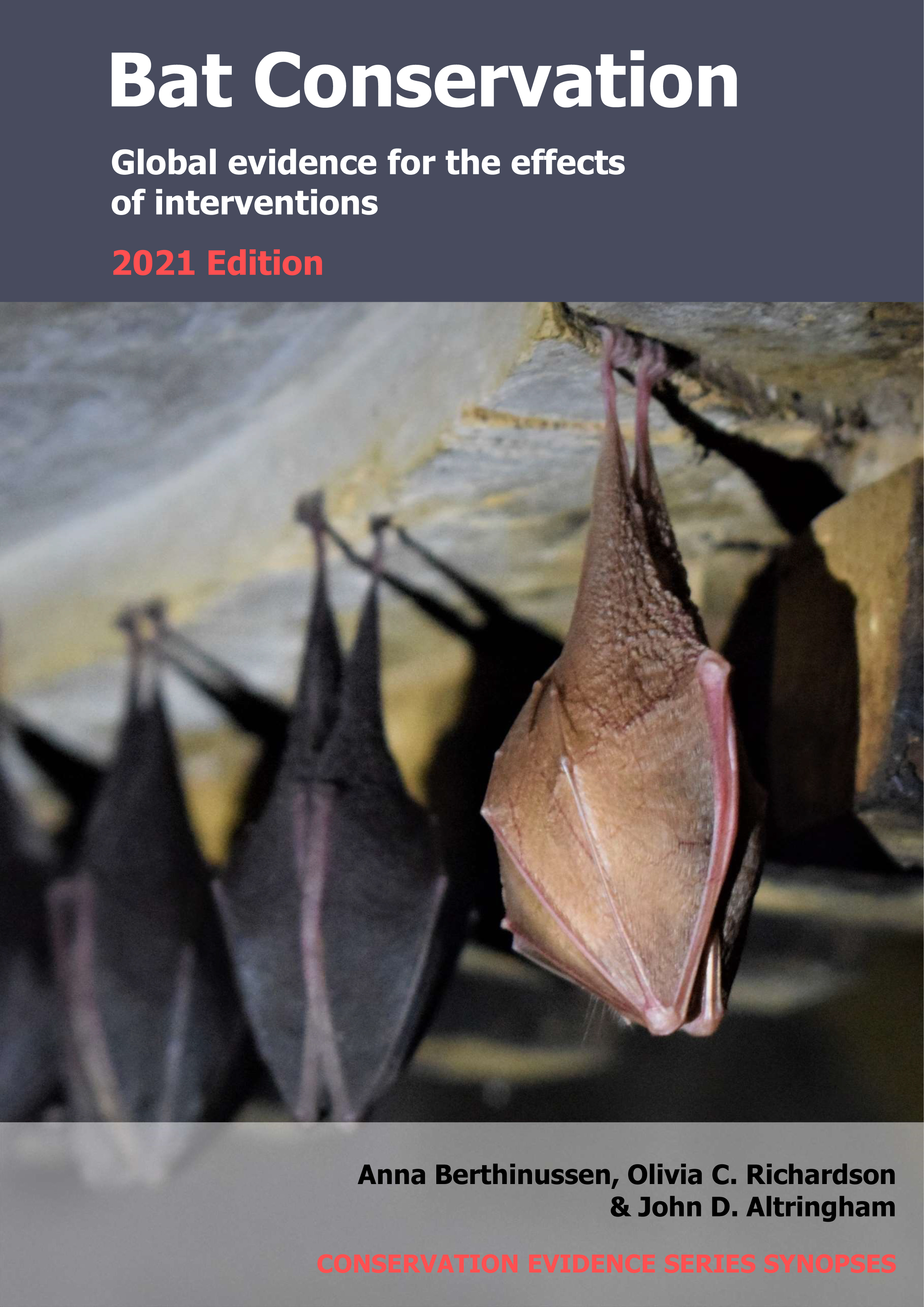Install bat gantries or bat bridges as road/railway crossing structures for bats
-
Overall effectiveness category Unlikely to be beneficial
-
Number of studies: 3
View assessment score
Hide assessment score
How is the evidence assessed?
-
Effectiveness
20% -
Certainty
42% -
Harms
0%
Study locations
Supporting evidence from individual studies
A replicated, site comparison study in 2010 at four bat gantries (or bat bridges) on four roads within agricultural areas of northern England, UK (Berthinussen & Altringham 2012) found fewer bats using bat gantries to safely cross roads than crossing below them at traffic height. The number of bats using gantries to safely cross roads was lower (2–24 bats, <1–11% of crossing bats) than the number of bats crossing roads at traffic height below gantries (10–751 bats, 17–84%). The four bat gantries were of a similar design (height 6–9 m, width 2 m) with two or three pairs of wires spanning the road (20–30 m) with plastic spheres attached. All four roads had 2–3 lanes of traffic carrying an average of 12,000–17,000 vehicles/day. At each of four gantries, crossing bats were observed and recorded with bat detectors during 10 x 90-minute surveys at dusk or dawn in June–July 2010. Bats were counted as ‘using’ gantries when flying within 2 m of the wires above traffic height (>5 m above the road).
Study and other actions testedA replicated study in 2014 at two bat gantries (or bat bridges) over a road in the UK (Berthinussen & Altringham 2015) found that one bat gantry (or bat bridge) was used by 3% of crossings bats and another was not used at all. At one gantry, fewer bats used the bat gantry (3%, 1 of 35 bats) than crossed the road below at traffic height (80%, 28 of 35 bats). At the other gantry, no bats used the bat gantry to cross the road, but 4 bats crossed the road below at traffic height. Four bat species or species groups were recorded in total (see original report for data for individual species). Both bat gantries (30 m long x 2 m wide x 7 m high) had wire mesh spanning a four-lane road between two vertical poles on each side. At each of two gantries, crossing bats were observed and recorded with bat detectors during 7–9 x 60-minute surveys at dusk or dawn in June–August 2014. Bats were counted as ‘using’ gantries when flying within 2 m of the wires above traffic height (>5 m above the road).
Study and other actions testedA study in 2016 of a bat gantry (or bat bridge) at a road construction site near Beauvais, France (Claireau et al 2019) found that the temporary wire bat gantry was used by three bat species or species groups, although 46% of bats crossed the road at other locations. The gantry, installed within a bat commuting corridor, was used by 54% (97 of 180) of crossing bats, whereas 43% (77 of 180) crossed the road at other locations within the corridor and 3% (6 of 180) crossed at other locations outside the corridor. Crossing heights were not reported. Three bat species/species groups used the gantry (nearly all Pipistrellus spp.) and five bat species/species groups crossed at other locations (see original paper for details). The gantry (80 m long, <2 m high) was temporarily installed within a bat commuting corridor during the construction of a four-lane highway in 2015–2016. Two parallel wires (1.2 m apart) were strung across the road, each with 29 reflective polystyrene spheres (23-cm diameter) attached. Six pairs of bat detectors on opposite sides of the road (one pair at the gantry, five pairs within the commuting corridor or adjacent habitats) simultaneously recorded crossing bats over four consecutive nights in May 2016.
Study and other actions tested
Where has this evidence come from?
List of journals searched by synopsis
All the journals searched for all synopses
This Action forms part of the Action Synopsis:
Bat Conservation
Bat Conservation - Published 2021
Update 2020





)_2023.JPG)














